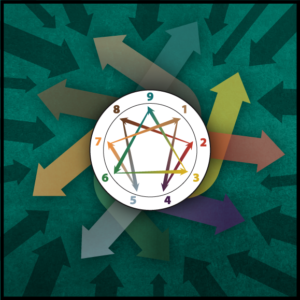 In the first blog of this series, the first five main reasons for mistyping were covered: insufficient knowledge of the Enneagram: misunderstood, old or incorrect concepts; focusing on what and not why; lack of self-awareness; and subtypes. This second blog reviews five additional reasons why mistyping occurs.
In the first blog of this series, the first five main reasons for mistyping were covered: insufficient knowledge of the Enneagram: misunderstood, old or incorrect concepts; focusing on what and not why; lack of self-awareness; and subtypes. This second blog reviews five additional reasons why mistyping occurs.
Primary reliance on tests
There are so many methods for helping people identify type, tests among them. Of course, some tests are better than other tests, but even the best tests do not identify type 100% accurately. If the person taking the test does not have a well-qualified outside source of guidance in terms of the accuracy of the test’s results, mistyping is the result.
Trauma
Big trauma can cover someone’s real type for so many reasons. If a person is still traumatized, their self-awareness may be low and their current behavior may not reflect their true type. In a sense, this person may be at a low-self-mastery level where it is more difficult to see type accurately. High self-mastery individuals, although they may not exhibit type in obvious ways, are usually self-aware enough, with the proper guidance, to determine their type accurately.
Overlays (family, culture)
Overlays can be country, culture, family, and more. At first glance, for example, a person from France, which is a type Four culture, may perceive themselves as a Four because the French culture is extremely strong. Family overlays happen enough to be a factor, although not everyone has a family type overlay. In my own family, for example, my mother was a 6 and father a 5. Our 6 mother had a far more dominant influence on the family, so both my brother and I have this overlay. He’s a 6 himself, so this overlay has intensified his 6ness. For me as a 2, the impact is I am more tuned into other people’s agendas and do engage in anticipatory scenario planning, although not as strongly or as long as a 6. In addition, my scenario thinking goes to worst-case and best-case.
Teachers telling type
Many Enneagram teachers tell people under their guidance what there types are, even if these teachers don’t realize they are doing so. They might say, “You’re not this type, you’re that type” and mean the statement as an opinion rather than a definitive answer. Or they may say, “Based on this and that, you’re this particular type.” People who want to discover their type often look to teachers to tell them or confirm their type, and often hear a teacher’s suggestion as a statement of fact.
In addition, some Enneagram teachers think it is their job and role to tell people their type. These teachers do believe they are accurate in their assessments. The problem is that they can be wrong, but they may tell people in such an authoritative way that people under their guidance may look no further.
Teachers not guiding to clarification of type
Some Enneagram teachers believe it is absolutely wrong to give any indication of a person’s type, even when people have come to them for guidance. While self-exploration is admirable and guiding people in this direction can be an art form, it can also leave individuals incorrectly typed or not finding their type for a very long time, longer than is really necessary. Some say, “If they get their type wrong, it’s Ok because they’ll figure it out eventually.” The issue here is this: is it really OK to let people think they are a type they are not, engage in the related development work, and then find that they’ve made little progress because their type is incorrectly identified?
Summary
The issue of how much to tell and how much to guide is important to everyone who is in a position to support others in using the Enneagram in their lives. Too much telling, and types can be wrong and the self-exploration is diminished. Too little guidance is like wandering in the desert without water, when the watering hole is just within reach.
Ginger Lapid-Bogda PhD, the author of seven best-selling Enneagram-business books, is a speaker, consultant, trainer, and coach. She provides certification programs for professionals around the world who want to bring the Enneagram into organizations with high-impact business applications, and is past-president of the International Enneagram Association. Visit her website: TheEnneagramInBusiness.com. ginger@theenneagraminbusiness.com

Comments are closed.